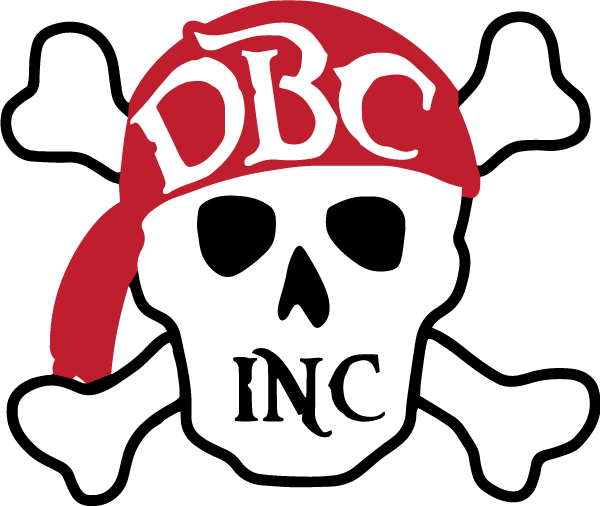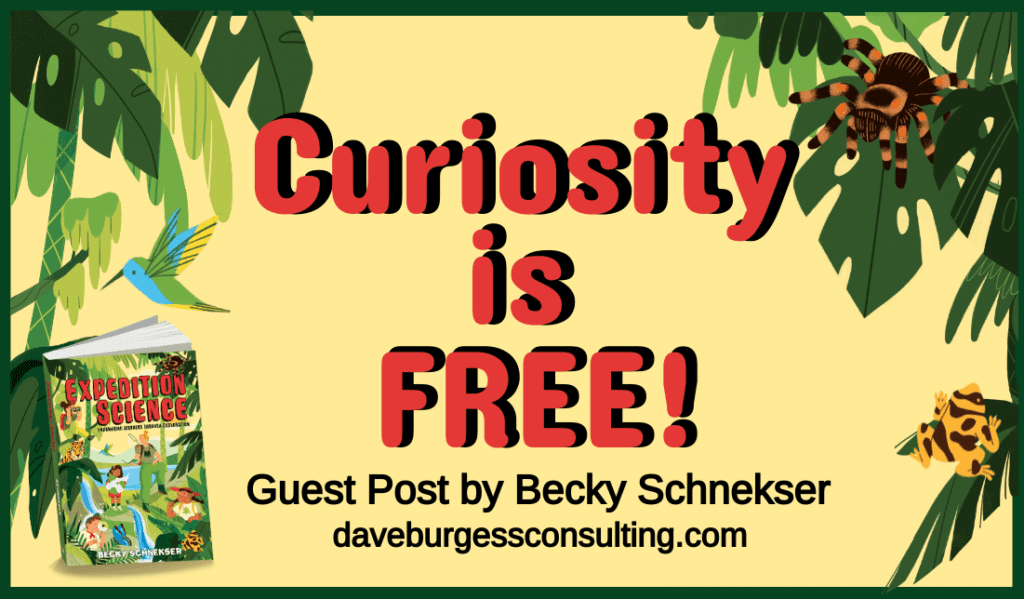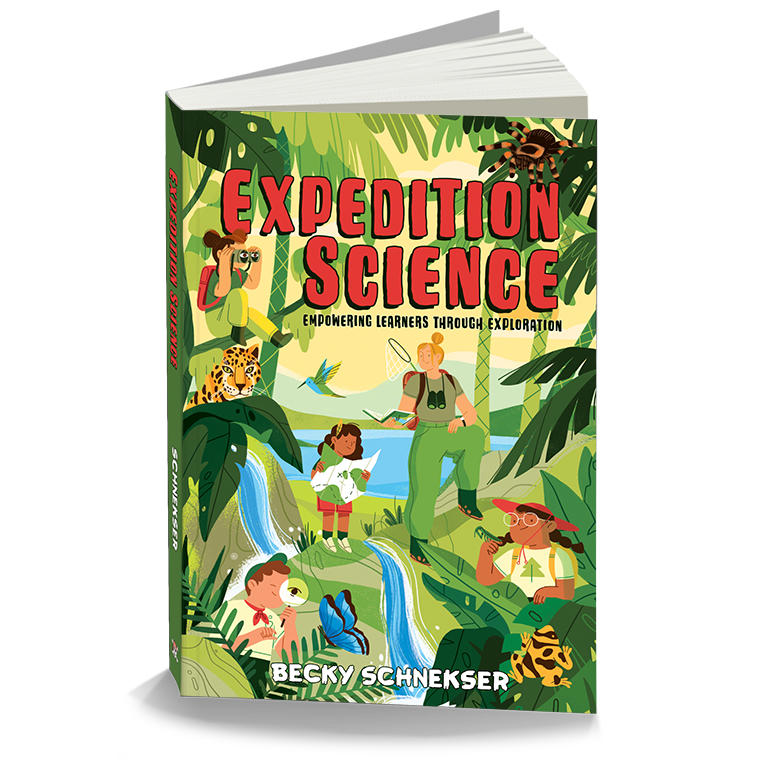Today's guest blog is brought to you by a K-5 science teacher, explorer, and field scientist in Virginia who believes that authentic experiences yield the best and most effective learning opportunities. She is passionate about experiential learning, especially in the style of expeditions, hence why she teaches the way she teaches, completes field expeditions annually, and wrote the book Expedition Science: Empowering Learners through Exploration...Becky Schnekser!
Take it away, friend!
Guest Post by Becky Schnekser
The world of education, myself included, often get wrapped up into this idea that we need unlimited resources, space, ideas, people, the list goes on and on, in order to be effective. We engage in these “I have less than you” battles when it comes to the ”stuff” we use to teach and can get sucked into this “poor me” sinkhole of despair and comparison. This comparison is really just a mountain of excuses we build to justify not doing what we know is right for our learners.
Let me explain.
When we look at a learning opportunity and allow “I don’t have a kit to explain the laws of motion” to deter us from teaching it or rely on text only in order to expose learners to these concepts, it’s just an excuse dressed up as a legitimate roadblock. How did scientists discover and explore the laws of motion in order for them to become knowledge we impart upon learners in the first place? Did they call up a store and ask for a kit of materials? No, they used what was around them in order to explore, document, and share what they learned. This took a lot of time, it was frustrating; they failed often, and probably felt like giving up frequently. They did not give up because “they didn’t have what they needed”, instead they found the opportunity in the situation. They found what they did have rather than dwell on what they didn’t and we are all better for that resilience. On top of it all, curiosity drove their exploration and allowed them to persevere and find opportunities to learn rather than to give up on an idea.
Curiosity is free.
There is no place to purchase curiosity; it’s free and unlimited in the world, especially in the minds of our learners. Curiosity also helps us as lead learners, to tap into opportunities, to see opportunities rather than roadblocks on the map of education. So let’s say you need to teach the laws of motion in addition to vocabulary such as velocity, momentum, friction, and speed, and you do not have a kit of materials purchased by your school for your use. What do we do?
First, avoid despair--you can teach laws of motion without a prepackaged kit. You can teach laws of motion without a textbook or leveled readers. Where is the opportunity then? Where do we see the laws of motion in our lives, or more importantly, in the lives of our learners? What are they spending time doing or using every day that could be great examples of these learning standards? Remember fidget spinners? Remember the memes, unstoppable lamenting by educators on social media about their inherent evil within classrooms? Think about those devices we were so quick to ban...do you see the laws of motion? What does it take to make them move? What does it take to stop the motion of fidget spinners? What makes them function? Why not harness this opportunity and tap into your learners’ curiosity and obsession to find these scientific concepts in their everyday lives? What about having them create a fidget spinner of their own using lego pieces? As they do this, they plan, build, create, solve problems and are driven by organic engagement in something relevant to their own lives. Here, you have another opportunity to take advantage of this natural (and free) curiosity, motivation, and engagement to infiltrate the vocabulary they need to know.
Are fidget spinners “so five years ago?”, that’s fine. What about hot wheels cars and tracks? They tend to be evergreen toys with lasting engagement. What about the hundredth time a water bottle falls off a students’ desk and scares the life out of you because it is one of those metal ones that sound like the earth itself is shattering? What about the pop ‘em toys that have seemingly replaced the fidget spinner? What about the natural curiosity of “what happens when I drop this?” What about taking our shoes off at school and sliding across different types of flooring? What about building a marble maze or labyrinth toy for any type of spherical object? What about allowing your learners to bring in toys from home and finding the connections between those items and laws of motion?
Do you see how many ideas just popped into my head in the last 20 seconds? All I did was think about opportunities to observe and explore laws of motion rather than how many reasons I could not possibly teach the concept without proper funding and resources provided by my institution. Don’t get me wrong--there is a problem there as well, but we cannot allow it to limit the experience of my own learners, no matter the circumstances we find ourselves in.
At the end of the day, curiosity is free and opportunities abound when you look for them. There is no shortage of these free items unless you allow your mind to place those limits there.
Here is your challenge: What is one topic, standard, piece of content that you struggle to deliver to your learners? What makes it difficult? Take a step back and allow your mind to find a new way, a new opportunity, allow curiosity to climb in and find new possibilities for that topic or standard? Still stuck? Reach out on social media--I love thinking through these types of things. You can find me on Twitter and Instagram @schnekser, and you always have the wider #tlap network.
Thank you, Becky!
Thank you, Becky!
If you don't already--follow Becky on Twitter for more expedition inspiration!
And, check out her book Expedition Science: Empowering Learners through Exploration HERE.
Expedition Science
Once a reluctant science teacher, Becky Schnekser now takes her elementary-aged scientists on virtual field trips to the Amazon, spelunking explorations right in the classroom, and all-weather research trips to the school’s rainwater collection ponds.
More info →





